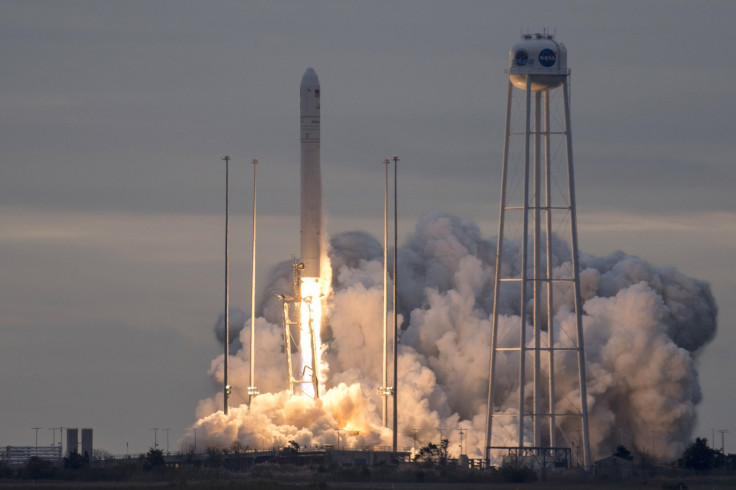Russia-US Defense Contracts Continue To Be Important For Kremlin

Russian engine manufacturing company Energomash NPO has signed a contract with the Dallas-based company Orbital ATK for the supply of four RD-181 liquid rocket engines to the United States.
According to Russian newspaper Kommersant, the contract, which was signed sometime this summer, is due in 2021. The exact amount of transaction for the deal was not disclosed by the outlet. The engines will be used to power American carrier rockets such as Antares, Russian news outlet RBC reported.
In 2017, the Wall Street Journal reported that the U.S. military was finding it difficult to replace Russian-manufactured rocket engines with appropriate domestic replacements, despite pressure from the Congress to quickly phase out the RD-180 engines on national-security grounds. As a result, there was a high possibility that United Launch Alliance, the Pentagon’s primary rocket provider, would continue flying some 1990s-vintage Atlas V boosters with Russian-built engines till 2024 or 2025.
However, the U.S. is not the only one dependent on Russian-manufactured military equipment. Dmitry Rogozin, the head of Roskosmos — the state corporation responsible for space flight and cosmonautics program for the Russian Federation — recently opened up about why the military contracts with the U.S. were vital for Russia.
“In order to build a common standard of the production culture, such as in Energomash, to make it both at the Voronezh Mechanical Plant and in our Perm enterprise, funds are needed,” he said.
And since the budget allocated for domestic companies' manufacturing of military equipment was limited, funds from U.S. contracts were going to help expand the enterprise. The U.S. has been purchasing RD-180 from Russia since 1997 and unlike other countries, it usually strikes a deal for more than 10 units at a time.
Meanwhile, Denis Manturov, the Minister of Industry and Trade of the Russian Federation, told Russian news outlet Ria Novosti that the Kremlin shipbuilders was ready to manufacture helicopter carriers for foreign customers who were willing to buy them.
"I propose not to catch anyone by the tongue, the terminology is very complex and complex both in the army and the manufacturers who always adapt to the requirements of the customer. Therefore, it is better to clarify this issue from the main customer," Manturov said.
"I can only say that we can accurately produce helicopter carriers and can sell them to customers, including foreign customers, who will be interested in this," he added.
In August, Manturov said Russia was looking to take helicopter carrier production to the next level by not only manufacturing landing craft specific to helicopters but universalizing it. The advanced new-age landing crafts will be able to carry helicopters onboard. According to Deputy Prime Minister of Russia Yury Borisov, the first Russian helicopter carrier was expected to be unveiled in 2022.
In 2011, France had struck a deal with Russia to buy two Mistral-class helicopter carrier. However, Moscow terminated the contract in 2015 because of the sanctions the U.S. placed on it over the Ukrainian crisis.
“By more closely matching our designations with those of our international partners and thwarting attempts to evade sanctions, we are once again demonstrating the United States’ unwavering resolve to pressure Russia to respect the security and sovereignty of Ukraine,” John E. Smith, the acting director of the U.S. Office of Foreign Assets Control, said in a statement at the time, The New York Times reported.
© Copyright IBTimes 2024. All rights reserved.





















